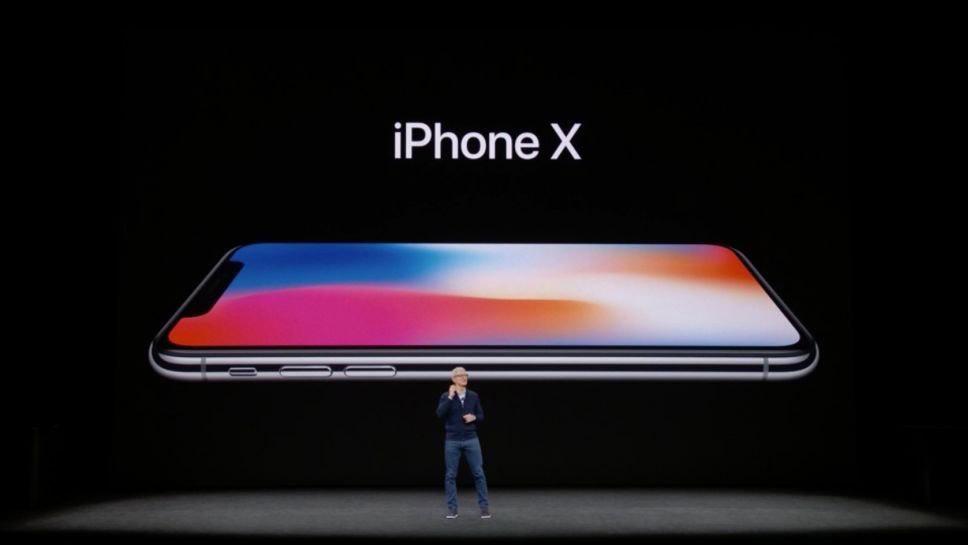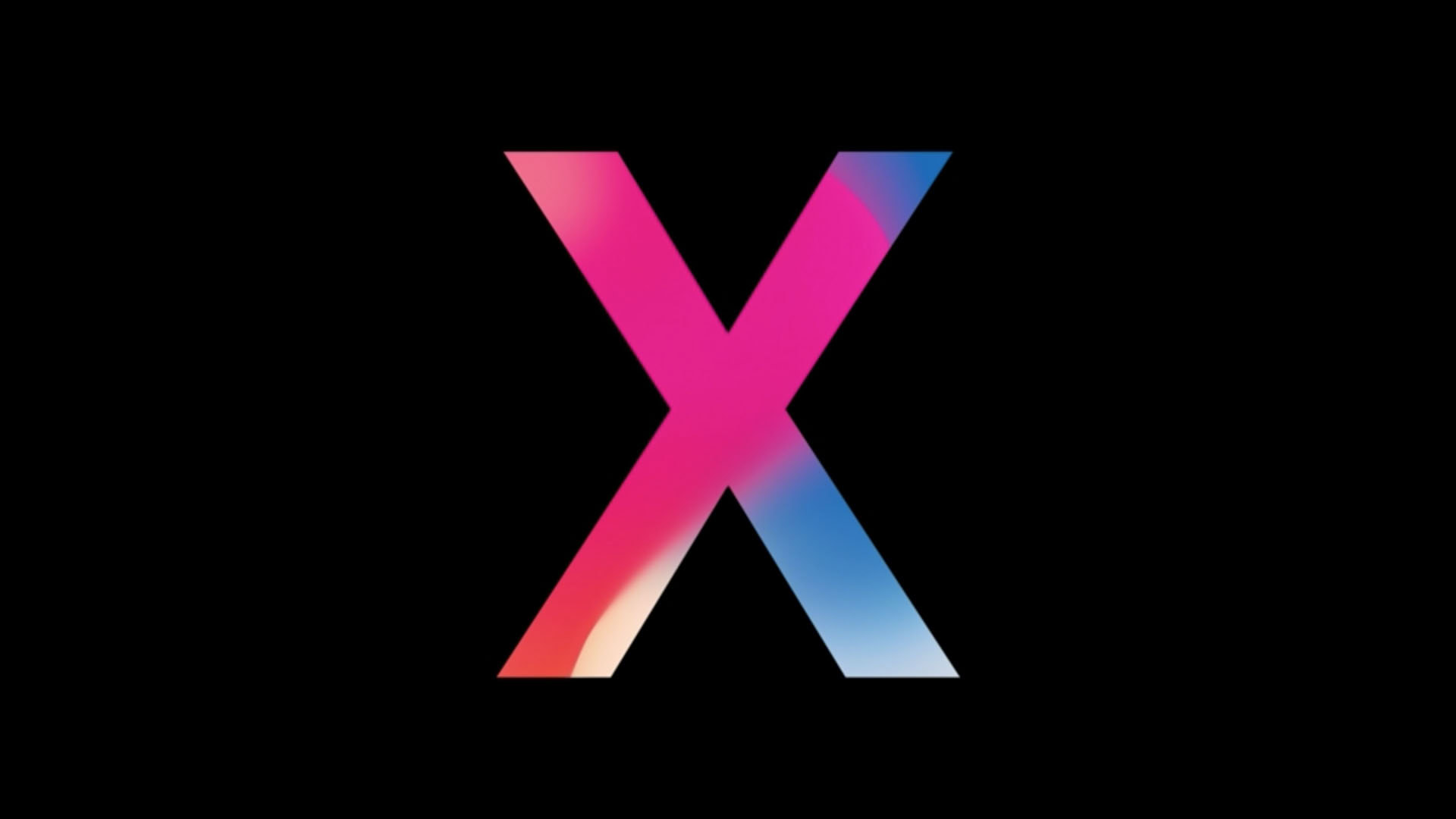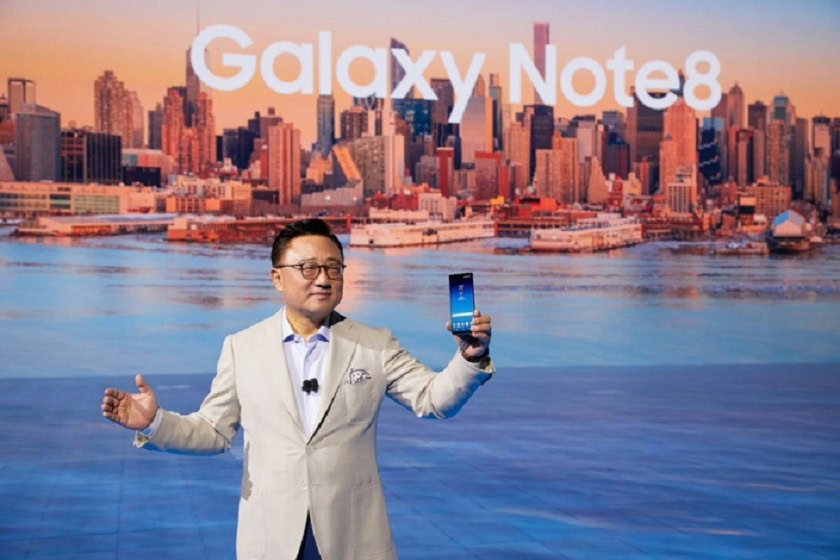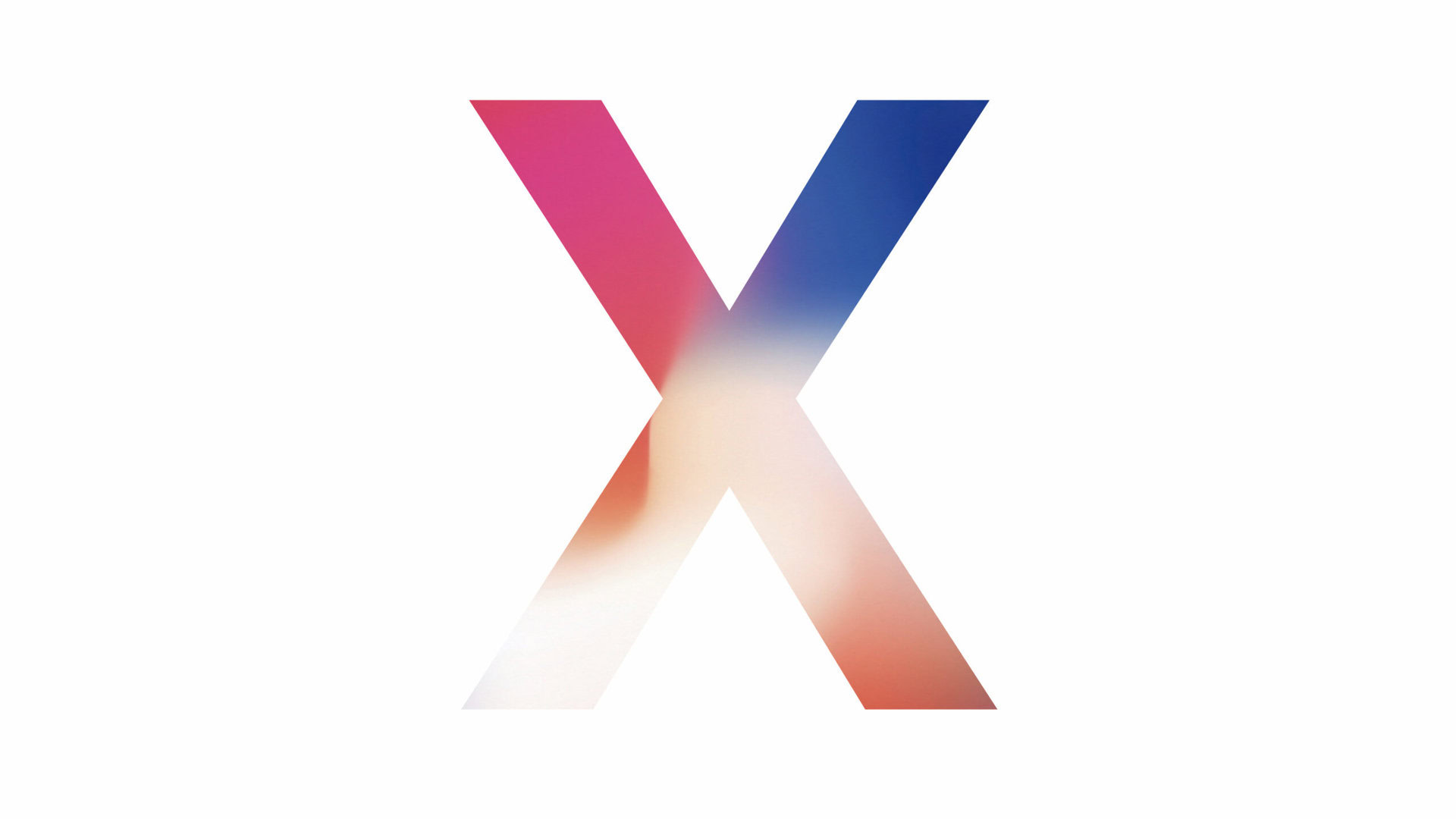Affiliate links on Android Authority may earn us a commission. Learn more.
Apple iPhone X vs. the Android competition
Published onSeptember 13, 2017

With ten years of iPhones under Apple’s belt, the company wants to celebrate the occasion with the iPhone X. From the near bezel-less display on the front to the powerful guts on the inside, there is plenty for Apple fans to be excited about with the iPhone X.
First thing’s first, however: we know it is a bit strange that an Android-focused website is talking about Apple’s high-end iPhone. Our duty to bring you the latest and greatest Android coverage, but we also need to look at what Android’s biggest competitors bring to the table. With that in mind, let’s compare the iPhone X to some of its competitors in the Android realm.

Let us begin with the display, which has turned into quite the narrative for an increasing number of flagship smartphones this year, and rightfully so — the move to taller displays have spurred manufacturers to make phones with smaller bezels. Apple officially joins this trend with the iPhone X, which features a near bezel-less 5.8-inch, 2,436 x 1,125 resolution OLED “Super Retina” display. At 458 ppi, not only is the iPhone X the most pixel-dense iPhone Apple has made so far, but with the move to OLED, the phone is much friendlier for VR content.
As final points on the iPhone X’s display, it supports HDR 10 and Dolby Vision, along with Apple’s True Tone technology, which makes the display match your environment’s ambient lighting conditions.
By comparison, the Samsung Galaxy Note 8, LG V30, HTC U11, and Google Pixel XL feature at least QHD resolution, but the finer points only continue from here. Sans the U11, all of the phones feature OLED displays, so they will be better for VR content and for those saturated colors that some folks really enjoy. The displays on the Galaxy Note 8 and V30 almost fully cover the two phones’ fronts, while the U11 and Pixel XL stick to the regular 16:9 aspect ratio. The Galaxy Note 8’s and V30’s displays are HDR-capable, but they support different HDR standards.
| iPhone X | Samsung Galaxy Note 8 | LG V30 | HTC U11 | Google Pixel XL | |
|---|---|---|---|---|---|
Display | iPhone X 5.8-inch OLED Super Retina display (2436x1125) 458 ppi | Samsung Galaxy Note 8 6.3-inch QHD+ AMOLED (2960x1440) 18.5:9 aspect ratio | LG V30 6.0-inch POLED FullVision (2880x1440) 18:9 aspect ratio | HTC U11 5.5-inch QHD LCD (2560x1440) 16:9 aspect ratio | Google Pixel XL 5.5-inch QHD AMOLED (2560x1440) 16:9 aspect ratio |
SoC | iPhone X Apple A11 Bionic | Samsung Galaxy Note 8 Snapdragon 835 or Exynos 8895 | LG V30 Snapdragon 835 | HTC U11 Snapdragon 835 | Google Pixel XL Snapdragon 821 |
CPU | iPhone X Hexa-core | Samsung Galaxy Note 8 4x 2.35 GHz Kryo 280 + 4x 1.9 GHz Kryo or 4x 2.3 GHz Samsung M2 + 4x 1.7 GHz Cortex-A53 | LG V30 4x 2.45 GHz Kryo 280 + 4x 1.9 GHz Kryo | HTC U11 4x 2.45 GHz Kryo 280 + 4x 1.9 GHz Kryo | Google Pixel XL 2x 2.15 GHz Kryo + 2x 1.6 GHz Kryo |
GPU | iPhone X Unknown | Samsung Galaxy Note 8 Adreno 540 or Mali-G71 MP20 | LG V30 Adreno 540 | HTC U11 Adreno 540 | Google Pixel XL Adreno 530 |
RAM | iPhone X Unknown | Samsung Galaxy Note 8 6 GB | LG V30 4 GB | HTC U11 4 / 6 GB | Google Pixel XL 4 GB |
Storage | iPhone X 64 / 256 GB | Samsung Galaxy Note 8 64 / 128 / 256 GB | LG V30 64 GB 128 GB (V30 Plus only) | HTC U11 64 / 128 GB | Google Pixel XL 32 / 128 GB |
MicroSD | iPhone X No | Samsung Galaxy Note 8 Yes | LG V30 Yes | HTC U11 Yes | Google Pixel XL No |
In terms of processing, things are a bit unknown regarding the iPhone X. We know that it features Apple’s A11 Bionic, which has two performance cores, four high-efficiency cores, and an Apple-designed GPU. In other words, the A11 Bionic is a hexa-core SoC that is almost entirely Apple-designed, which should result in a boost for augmented reality applications and development, as well as better battery life and performance compared to previous iterations.
By comparison, the Galaxy Note 8, V30, and U11 feature the latest Snapdragon 835 SoC, while the Pixel XL makes do with the Snapdragon 821. In smartphone years, the Snapdragon 821 is a bit long in the tooth and not as efficient as the Snapdragon 835, but the Pixel XL’s software makes up for those “shortcomings.” Regardless of which phone you pick, it will be plenty powerful for your needs. It is only a matter of whether you want a bit more future-proofing or are okay with something a bit older.
Moving on to memory, it is unknown how much RAM the iPhone X packs, but there will be 64 GB and 256 GB configurations once it goes on sale. Going through the list, the V30 and Pixel XL feature 4 GB of RAM, with the former featuring 64 GB of storage and the latter coming in 32 GB and 128 GB configurations. The Galaxy Note 8 makes do with a whopping 6 GB of RAM and either 64 GB, 128 GB, or 256 GB of storage. Finally, the U11 features either 4 GB of RAM and 64 GB of storage or 6 GB of RAM and double the storage.
Support for microSD cards is a bit sporadic, with the iPhone X and Pixel XL the only phones on the table to not feature a microSD card slot.
| iPhone X | Samsung Galaxy Note 8 | LG V30 | HTC U11 | Google Pixel XL | |
|---|---|---|---|---|---|
Cameras | iPhone X 12 MP f/1.8 wide-angle + 12 MP f/2.4 telephoto rear with OIS and 2x zoom 7 MP f/2.2 front | Samsung Galaxy Note 8 12 MP f/1.7 wide-angle + 12 MP f/2.4 telephoto rear with OIS and 2x zoom 8 MP f/1.7 wide-angle front | LG V30 16 MP f/1.6 with OIS + 13 MP f/1.9 wide-angle rear 5 MP f/2.2 wide-angle front | HTC U11 12 MP f/1.7 with OIS rear 16 MP f/2.0 front | Google Pixel XL 12.3 MP f/2.0 rear 8 MP f/2.4 front |
Battery | iPhone X Unknown | Samsung Galaxy Note 8 3,300 mAh | LG V30 3,300 mAh | HTC U11 3,000 mAh | Google Pixel XL 3,450 mAh |
NFC | iPhone X Yes | Samsung Galaxy Note 8 Yes | LG V30 Yes | HTC U11 Yes | Google Pixel XL Yes |
Fingerprint | iPhone X No | Samsung Galaxy Note 8 Yes | LG V30 Yes | HTC U11 Yes | Google Pixel XL Yes |
Fast Charge | iPhone X Yes | Samsung Galaxy Note 8 Yes | LG V30 Quick Charge 3.0 | HTC U11 Quick Charge 3.0 | Google Pixel XL Yes |
IP Rating | iPhone X IP67 | Samsung Galaxy Note 8 IP68 | LG V30 IP68 | HTC U11 IP67 | Google Pixel XL No |
3.5 mm audio | iPhone X No | Samsung Galaxy Note 8 Yes | LG V30 Yes | HTC U11 No | Google Pixel XL Yes |
Extras | iPhone X Lightning, facial recognition (Face ID), Siri, fast charging, Animoji, HDR display, Apple Pay, Bluetooth 5 | Samsung Galaxy Note 8 USB Type-C, Bixby, facial recognition, wireless charging, Samsung Pay, HDR display, Bluetooth 5, Live Message, S Pen | LG V30 USB Type-C, wireless charging, HDR display, MIL-STD-810G certified, 32-bit Advanced Hi-Fi Quad DAC | HTC U11 USB Type-C, BoomSound Hi-Fi, HTCConnect, Hi-Res audio, Edge Sense, AI assistants | Google Pixel XL USB Type-C, Daydream, updates directly from Google |
OS | iPhone X iOS 11 | Samsung Galaxy Note 8 Android 7.1 Nougat | LG V30 Android 7.1.2 Nougat | HTC U11 Android 7.1 Nougat | Google Pixel XL Android 8.0 Oreo |
There is quite a bit to unfold with the cameras, so let’s start on the front. The iPhone X features a 7 MP “TrueDepth” camera and dual 12 MP cameras on the back, with OIS featured for both rear cameras. The selfie and rear cameras not only allow for portrait pictures, but the ability to change the lighting of those images after a portrait is taken. Previous iPhone cameras have been pretty solid, so we are not concerned about the iPhone X’s camera quality.
Going back to the iPhone X’s rear dual cameras, the second camera features a telephoto lens that allows up to 2x optical zoom. The Galaxy Note 8’s second rear camera is also a telephoto lens, while the V30’s second main camera rocks a wide-angle lens. The U11 and Pixel XL do not rock rear dual cameras, but they are excellent nonetheless.
Each phones has reasons why its cameras are good. The Galaxy Note 8 delivers sharp and saturated images, the V30 is a videographer’s dream, the U11 delivers color-accurate photos, and the Pixel XL features the best video stabilization we have seen on a smartphone. If your reason for a smartphone purchase is primarily due to the camera, you will not go wrong with any phone in this comparison.

Touching on the selfie sensor for a bit, the iPhone X’s uses Face ID, Apple’s facial recognition feature. According to the company, it is more secure than Touch ID and is just as fast when it comes to purchases and entering the phone. The Galaxy Note 8 also has facial recognition software and an iris scanner on the front, so stay tuned to see how the iPhone X and Galaxy Note 8 stack up against each other when it comes to facial recognition.
We finally land on additional features, where the iPhone X simultaneously plays catch-up and introduce a few noteworthy things. For starters, the iPhone X features wireless charging and fast charging, along with IP67 certification. The rest of the phones feature fast charging, though the Galaxy Note 8 and V30 are the only other phones in this comparison that include wireless charging. Also, every phone but the Pixel XL feature some level of dust- and water-resistance.
The iPhone X also introduces “Animoji,” which are animated emoji that use your captured muscle movements to mirror your expressions. We are torn about how useful Animoji will be, but they have the potential to be incredibly popular, considering how many people will potentially pick up the iPhone X.

Other bits and bobs include iOS 11, Siri, Apple Pay, and Bluetooth 5, just to name a few.
By comparison, the Galaxy Note 8 has a laundry list of features. From Bixby and Samsung Pay to the S Pen and Live Message, the phone definitely delivers with quantity and quality. The V30 is an audio maven’s dream phone, since it features a 32-bit Advanced Hi-Fi Quad DAC, while the U11’s Edge Sense means you can squeeze the sides to perform an action. The Pixel XL is relatively sparse on the feature front, but you cannot undermine its timely updates directly from Google.
Finally, the iPhone X does not feature a fingerprint sensor, a first for the iPhone line since the iPhone 5 in 2012. Every other phone in this comparison features a fingerprint sensor, so if you opt for the iPhone X, you had better hope that Face ID works as advertised.

In short, it is easy to scoff at the iPhone X, and I can understand why. In some regards, it is playing catch-up with the Android flagships of yesterday and today with wireless and fast charging capabilities. Apple finally upped the display resolution on the iPhone X to one that can compete with the best out there. Hell, I disagree with Apple over the removal of the headphone jack, particularly since the Lightning headphone market has not exactly flourished. Not a great look for a company proclaiming the iPhone X to be the future of smartphones.
At the same time, the point can be made that the iPhone X will be the first time the majority of folks (at least, in the US) will be exposed to such a form factor. Yes, Samsung and LG beat Apple to market with near bezel-less displays on their smartphones, but remember that the majority of people in the US buy iPhones. That’s an important point to keep in mind, since the iPhone X is most likely the design that Apple will move forward with and because it will sell out no matter what.
That is why I am happy that the Galaxy Note 8, V30, U11, and Pixel XL exist. If you don’t like iOS and record an embarrassing number of videos, the V30 is your choice. If you want the telephoto experience on Android and want great-looking hardware, the Galaxy Note 8 is right up your alley. You really can’t go wrong with any of the phones we have compared, and it will be interesting to see how the iPhone X stacks up against them in the real world once it becomes available in November.
What are your thoughts? Do you think the iPhone X does enough to pick it over the rest? Let us know in the comments and make sure to check out our announcement post on all of Apple’s new iPhones.
iPhone X vs The Android competition:
- Four reasons why I won’t buy the iPhone X
- Samsung Galaxy S9 vs Apple iPhone X
- OnePlus 6 vs Apple iPhone X: can David take on Goliath?
- Samsung Galaxy S9 Plus vs iPhone X
- The Xiaomi Mi 8 is the iPhone X clone nobody wanted: How did we get here?
- iPhone X gestures now in Android P? It’s the circle of theft